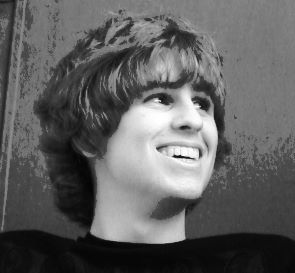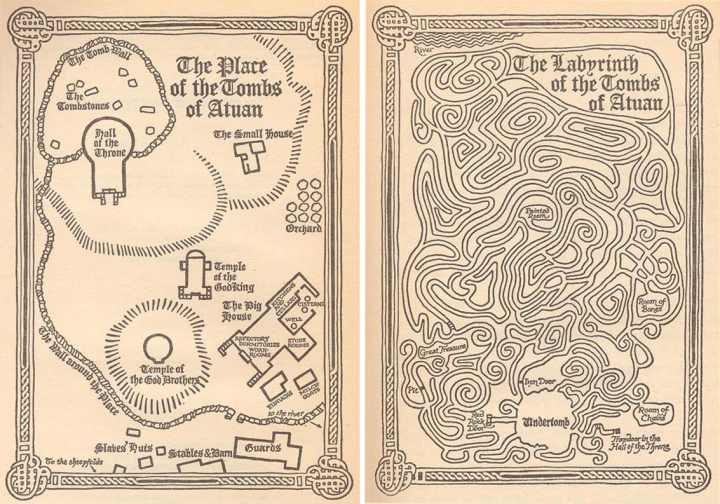The second book in Le Guin’s Earthsea series, The Tombs of Atuan is a fascinating counterpoint to A Wizard of Earthsea. Where the first book is about journeying to the ends of the Earth, Atuan is about being trapped inside it. The first book is a coming-of-age tale of a young man embracing his own shadow. Atuan is the story of a young woman escaping from a societal shadow larger than herself, and reclaiming her own individual identity. Where A Wizard of Earthsea is all exhilarating adventure and the open sea, this book is almost oppressively dark and confined. I love them both.
The Tombs of Atuan is a story about the Kargish people – pale-skinned warriors from the desert islands of the east. They are the same people who attack Ged’s village in the beginning of A Wizard of Earthsea. Essentially they’re Eathsea’s vikings: the fearsome outsiders and barbarians who have a different culture and way of life from the rest of the Archipelago. Atuan is one of their islands, on which a sect of women clerics and eunuchs worship the Kargish gods, the Nameless Ones, unseen entities which live in the darkness of the Tombs. Here, once again, Le Guin’s anthropological imagination shines. She tells a story which is totally limited to one location and only a few characters, but packs a lot of depth and complexity into how she slowly reveals Kargish society. Le Guin plays with sociological themes like religious conviction, gender roles, cultural norms, and the idea of the “other.”
A recent retrospective piece on Tor.com by Gary K. Wolfe celebrated The Tombs of Atuan and its heritage as a relative early entrant of feminist literature into fantasy and science-fiction. Wolfe points out that Atuan repeatedly examines the illusory nature of power. There is a complicated calculus of power symbolically given and received by characters in Atuan, and in the end the whole power structure collapses once Tenar decides to abandon her people’s ideology. These kinds of themes would later become much stronger and more blatant in Le Guin’s writing – so much so that, in my opinion, it hurts the storytelling quality of some of the other Earthsea books like Tehanu. However, in Atuan, the ideas are handled with quite a light hand and are given a fascinating intensity by the symbols attached to them. The Nameless Ones. The dark Tombs. A girl reclaiming her own name. Luckily, the story stands on its own.
A Wizard of Earthsea and The Tombs of Atuan are a one-two punch of storytelling and “worldbuilding” prowess. It’s as if Le Guin set herself a challenge to, when writing the sequel, entirely flip the script so that she couldn’t rely on reusing the work she had done in the first book. Atuan brings the reader a new society, a new perspective, a new type of story, and a new type of hero. In the end she reconciles the two opposite narratives by bringing Ged and Tenar together – two very different halves making a stronger whole, a theme which would be continued in her later Earthsea novels. Man and woman, light and dark, discovery and escape.
The Tombs of Atuan
Ursula K. Le Guin
Gollancz, 2018 (first published 1970)

